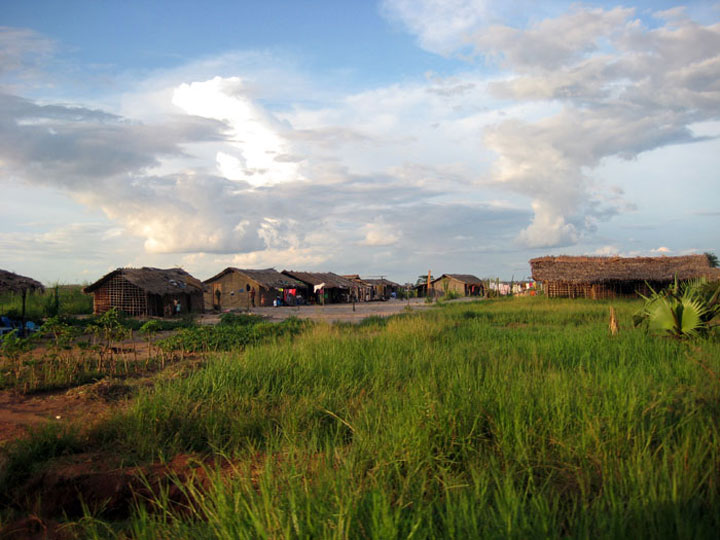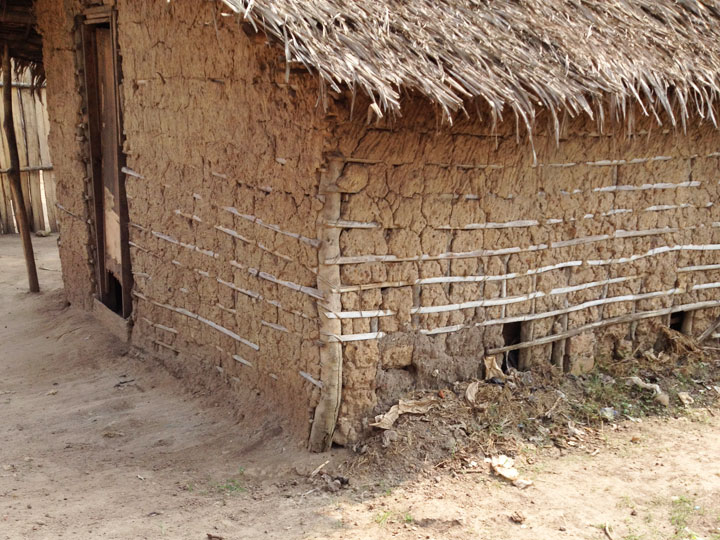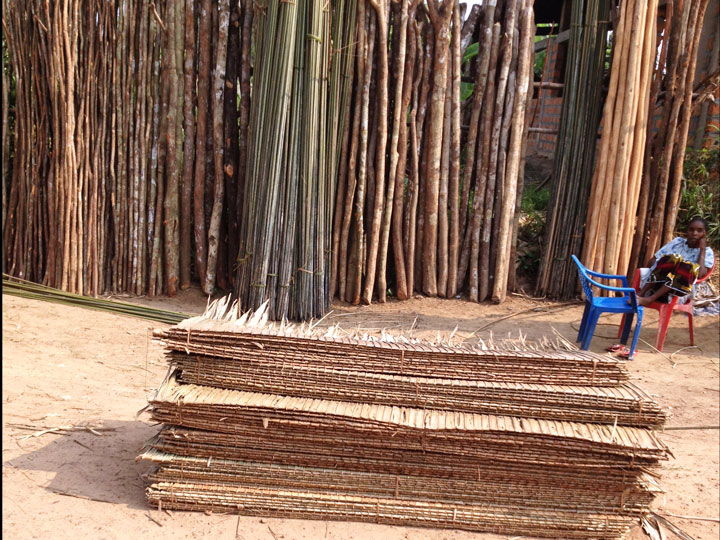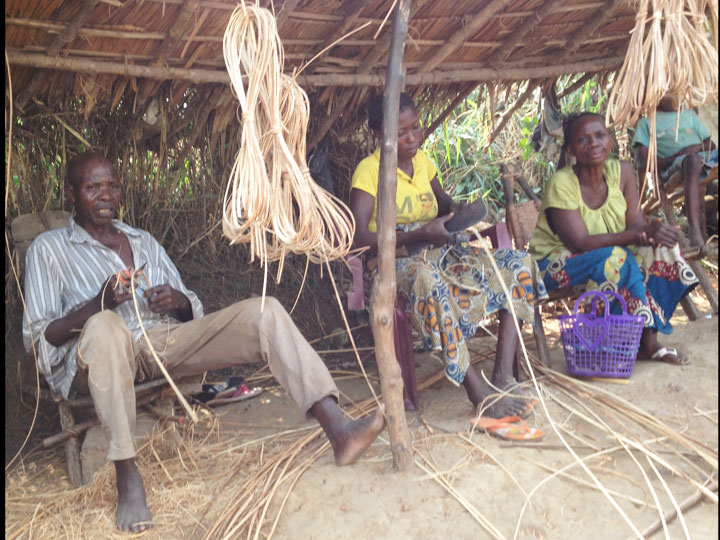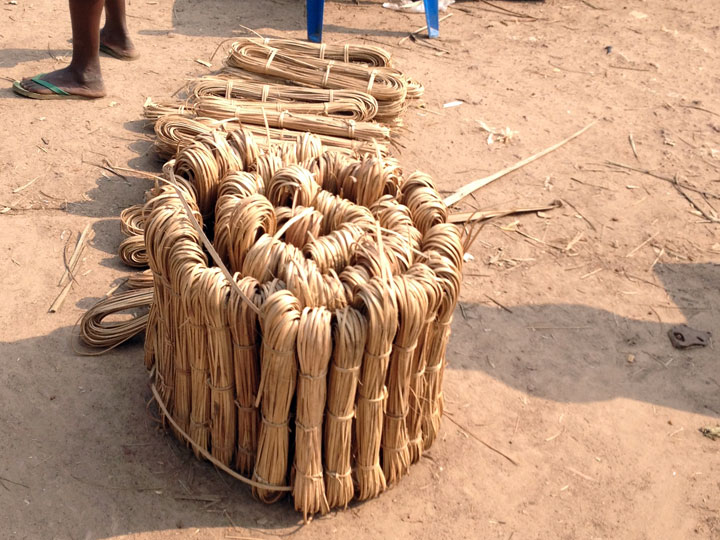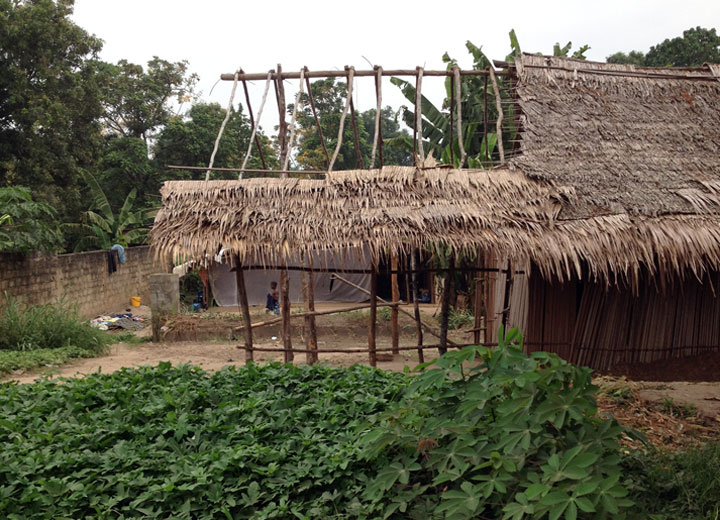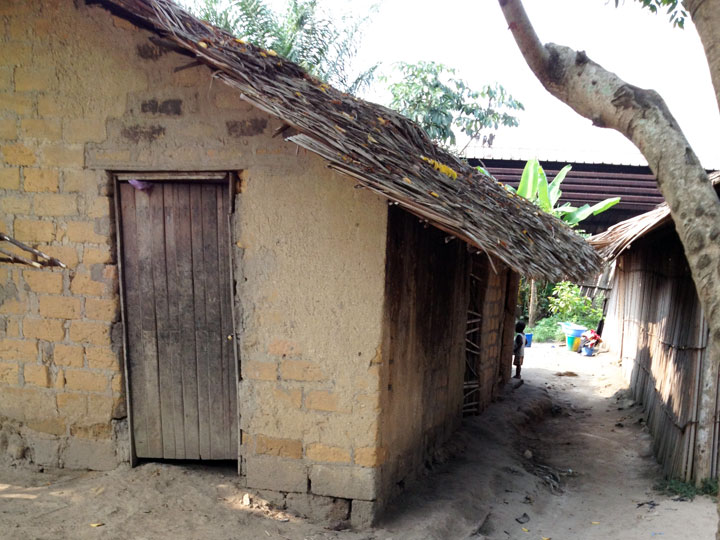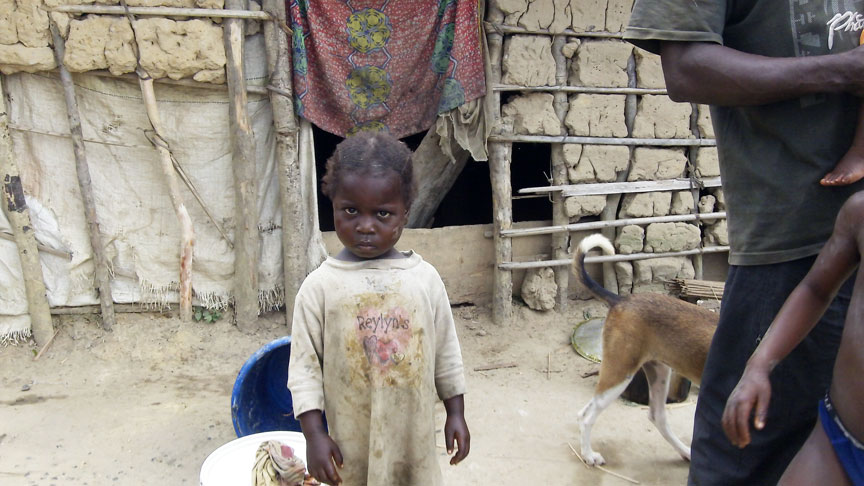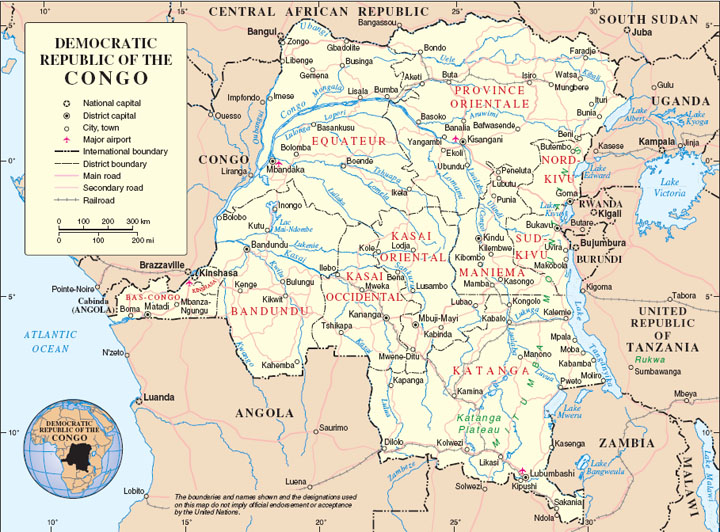In the Democratic Republic of Congo, a country of 75 million people, only a few cities have electricity and running water. The wealthy few live in comfortable brick homes powered by generators, often within a walled compound. For the great majority of people though, home is a dirt floor house built of sticks and dried mud with a thatch roof. They call this method of building: wattle and daub, in which a woven lattice of wooden strips called wattle is daubed with clay mud. Wattle and daub construction has been used for at least 6000 years in many parts of the world including America.
The traditional houses are built with no industrially manufactured materials. Everything is harvested in the dense tropical rainforest surrounding this area. Straight saplings and sticks are tied together with long strips of vines to form the walls of the house. Roofs are framed with sticks and covered with sheets of a certain variety of palm leaves. The palm leaves are folded in two and sewn together with finely split vines. We all remember Tarzan swinging from tree to tree on those vines.
A house can be built for about $500 when all the material is purchased but it cost only sweat and labor if one goes to the woods and harvest the material.
Two very distinct ethnic groups cohabit the Equator province. The Pygmies were the forest nomads, roaming the vast rainforest in search of game and traditionally only build temporary shelter with sticks and leaves. The Bantu population was more sedentary living in established villages. Their houses were a little more durable as described above. Recently the Pygmy population is abandoning the nomadic way of life and settling in near villages but still build much simpler house.
Like most places in the world, houses reflect the wealth status of the inhabitant and as the their condition improves so do the houses. First bricks walls replace the wattle and daub for a more durable construction, followed by sheet metal roofing.

